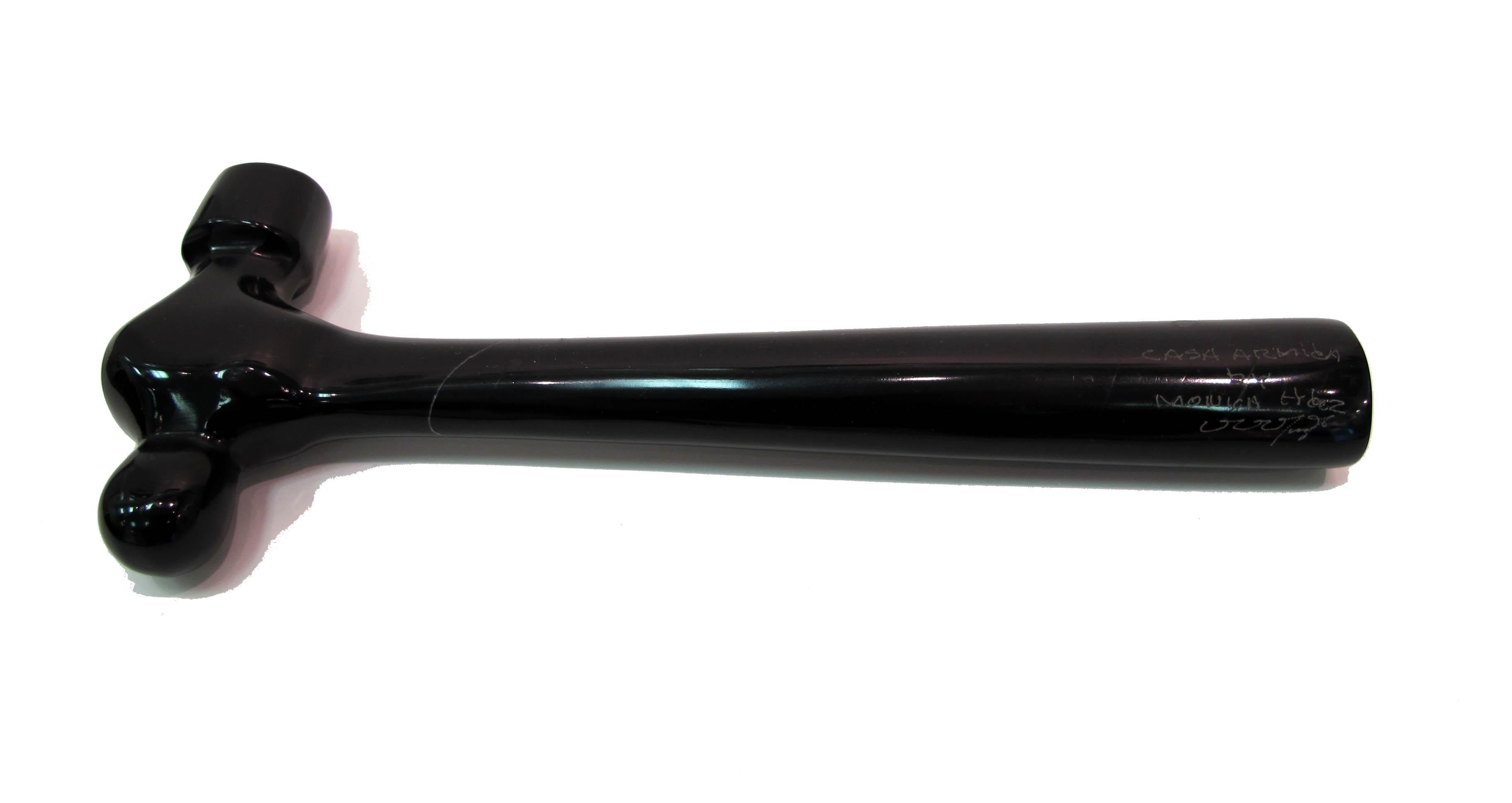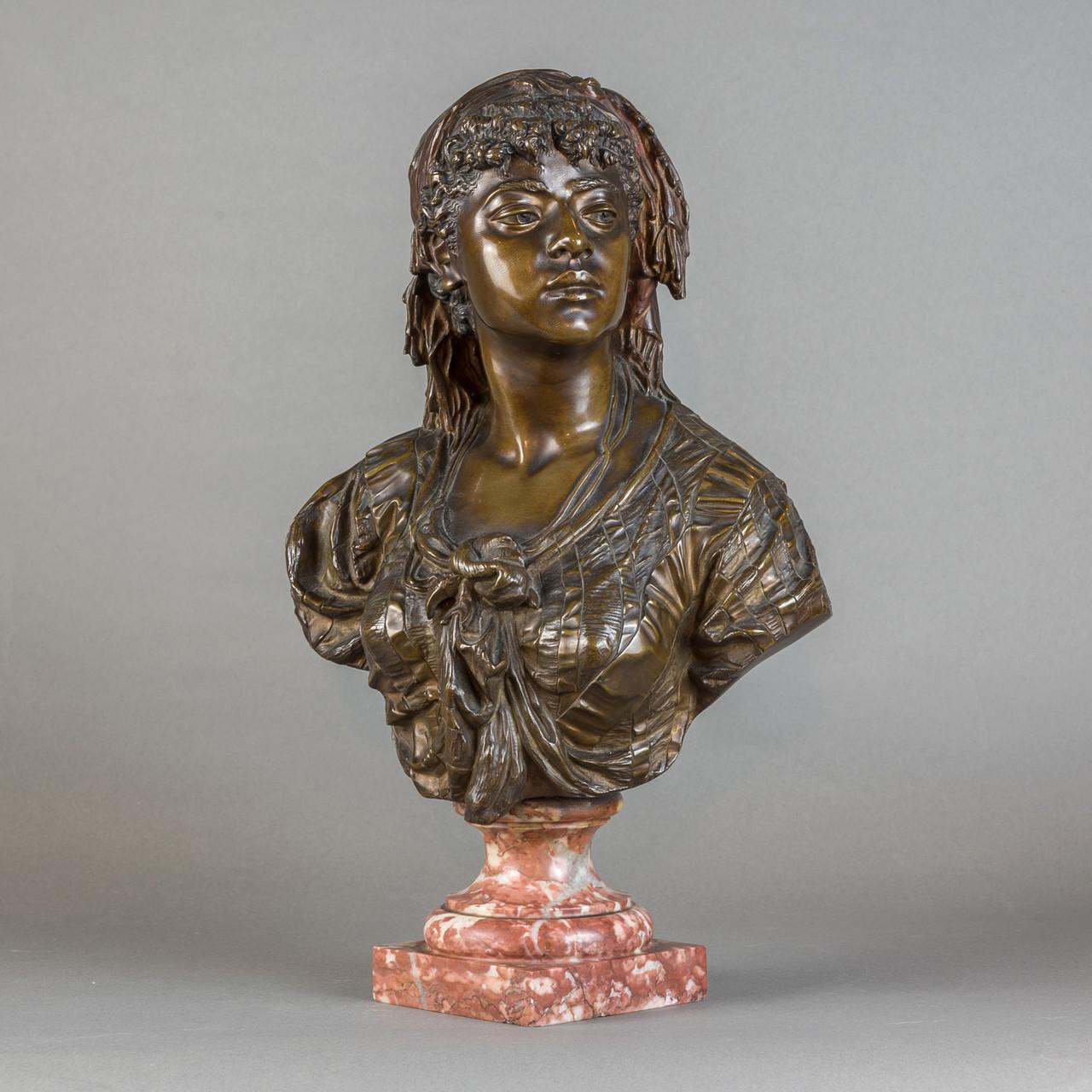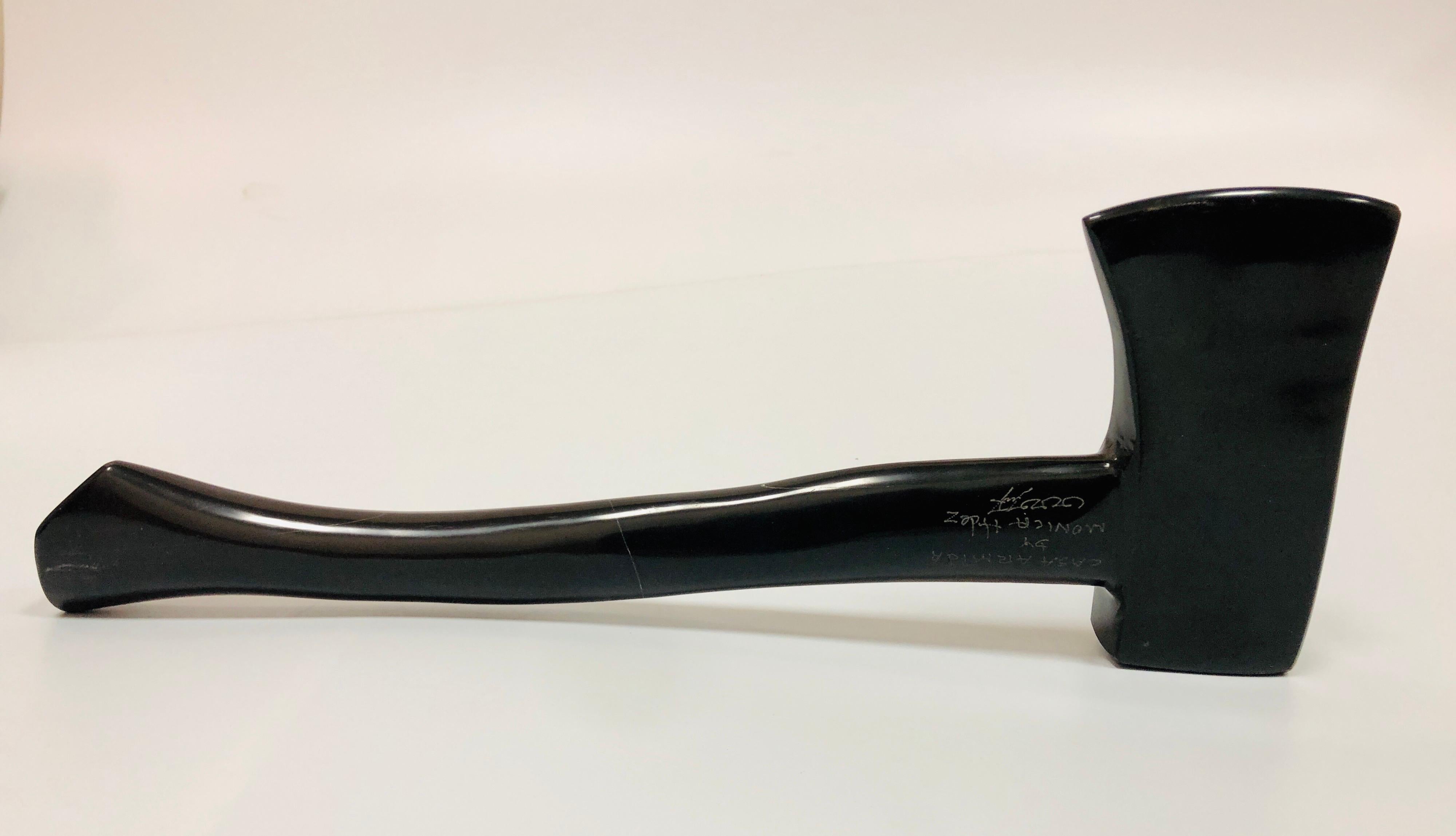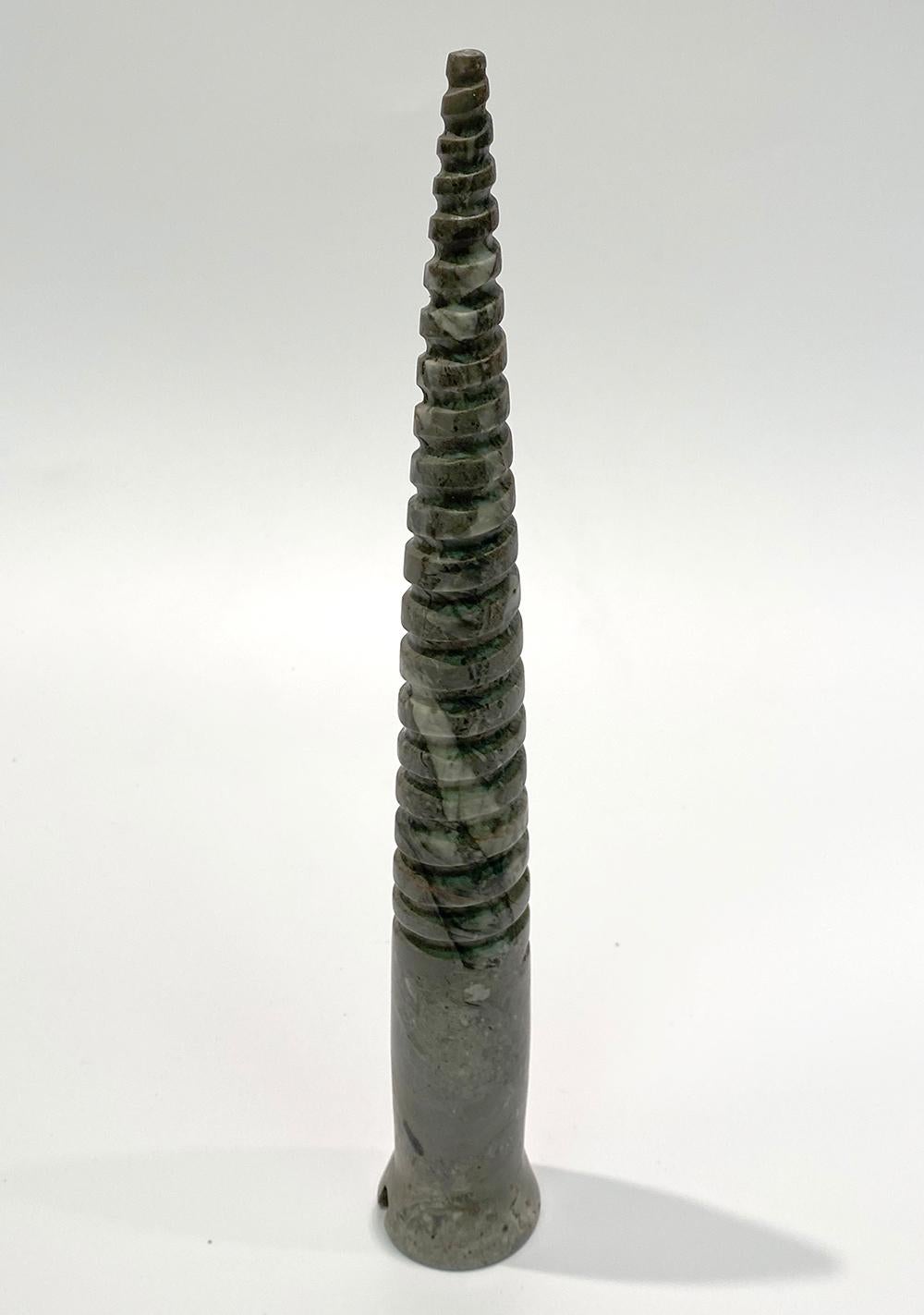Items Similar to Art Déco Period Large Carrara Marble Sculpture Bust.
Want more images or videos?
Request additional images or videos from the seller
1 of 21
Raymond DelamarreArt Déco Period Large Carrara Marble Sculpture Bust.1923
1923
About the Item
Art Déco period, large Carrara marble female bust sculpture by Raymond Delamarre, one of the pre eminent Art Deco sculptors of his day. Fashioned like a Renaissance Princess but with all the decorative details of the Art Deco period in the handling of the hair and dress. Having won the Prix de Rome in 1920, Delamarre sculpted his now famous 'Suzanne au bain'. Some of the details of this sculpture are very reminiscent of this work and it may have been sculpted during his period in Rome.
The sculpture when lit has a calm luminescence and beauty.
The sculpture entitled "Suzanne" was the first work sent to Paris by Delamarre from Rome. When the Villa Médicis reopened after the war their finances were in a poor state and in 1920 they were not able to organize the traditional exhibition, which showed works completed by students and deemed suitable to be sent to Paris. That academic year, Delamarre had prepared a female nude study in plaster but this was not shown until an exhibition was organized in Rome for the year 1921, by which time the Villa had started to get back to normal. It was then shown in Paris in the September of that year. In 1926 a Carrara marble version was accepted by the Petit Palais des Champs-Elysées. In 1960 it was moved to the Musée d’art moderne in Paris.
(The Delamarre family have recently reached out to us to confirm they held the original drawings and plaster model for this sculpture which they have donated to the museum 'La Piscine a Roubaix' where they are now on permanent display. They have confirmed the sitter was Marie-Rose de Sault, daughter of the politician Charles Jonnart and the work dates to 1923.)
Raymond Delamarre (1890–1986) was a French sculptor and medallist. He played a major role in the Art Déco movement. While his ecclesiastical work showed the influence of Catholicism, he was personally agnostic. His art, especially his war memorials, was also influenced by his firsthand experiences of the horrors of the First World War.
When aged sixteen years, Delamarre joined the École des Beaux-Arts in Paris and was attached to the studio of Jules-Félix Coutan. His studies were interrupted, firstly by his conscription into the army from 1911 to 1913 and then service from 1914 to 1918 after the French mobilization, although between the two he managed some further time back in Coutan's studio. Soon after mobilization Delamarre was sent to the front and was almost immediately taken prisoner. He was released in the course of an exchange of prisoners carried out in 1916 and returned to active service.
On leaving the army at the end of the war, Delamarre now tried to secure the "Prix de Rome" and with the bas-relief "Le retour du guerrier au foyer familial" he shared the prize with Alfred Janniot which meant he was able to spend four years in Rome at the Villa Médicis. He was to stay in Rome until 1924, grew a moustache and visited and studied the sculpture of Greece. The composition "Suzanne au bain" exhibited in 1921 at the Salon des Artistes Français is a good illustration of Delamarre's work at this time.
In 1925 and in collaboration with the architect Michel Roux Spitz, he took part in the competition to secure the work on the proposed "Monument à la Défense du canal de Suez" to be erected in Ismaîlia, a work of huge proportions and a most prestigious project. Also working with Roux-Spitz, he exhibited a sculptural composition for a water fountain at the Exposition des Arts Décoratifs in Paris, the bas-reliefs "Nessus et Dejanire" and "Persée et Andromède" cast in bronze in 1935, two tympani for the decorator Paul Follot, a bronze entitled "David" and a work in plaster entitled "Femme au bélier". Between 1926 and 1927, Delamarre worked on the "Mowgli" ronde-bosse. He also executed a bas-relief of Mowgli in plaster measuring 2 metres by 2 metres.
In 1927, Delamarre married Mariel Jean-Brunhes, the daughter of the geographer Jean Brunhes and they made visits to Spain and the Ballearics. In 1928, he produced the group "Adam et Eve" or "La tentation" in bronze, which composition was to appear subsequently in various limited editions, in both bronze and plaster. In 1931, he participated in the Exposition Coloniale de Paris, creating the figure of Christ carved from acajou wood from Cuba and eight Beatitudes. 1935 saw completion of his work for the ocean liner "Normandie" and 1937 he completed his great work in bronze for the Palais de Chaillot with three 4-metre-high figures being created symbolizing Philosophy, the Visual Arts and the Arts. These figures were erected after the 1939–40 war. These three figures were to reappear in a number of limited editions in both plaster and bronze and in a variety of sizes. From 1961 to 1973, he managed the business of the "Art Sacré" studios in Paris' place de Furstenberg, working with Maurice Denis and Georges Desvallières.
In 1963 Delamarre created the last of his great "monumental" works, executing 12 reliefs in stone for the entrance of the chapel of Nantes's new hospital, a building designed by Michel Roux Spitz, after which he worked on a number of busts, statues, medals and plaque until his death on 28 February 1986. His output both in medals and sculptures was huge. This article will concentrate on sculpture although a second article, just on Delamarre's medals would be both justified and welcome.
- Creator:Raymond Delamarre (1890 - 1986)
- Creation Year:1923
- Dimensions:Height: 21 in (53.34 cm)Width: 18 in (45.72 cm)Depth: 10 in (25.4 cm)
- Medium:
- Movement & Style:
- Period:
- Condition:Some minor bruising and scuffs and she would benefit from a clean.
- Gallery Location:Cotignac, FR
- Reference Number:
About the Seller
5.0
Platinum Seller
These expertly vetted sellers are 1stDibs' most experienced sellers and are rated highest by our customers.
Established in 2000
1stDibs seller since 2020
171 sales on 1stDibs
Typical response time: 1 hour
- ShippingRetrieving quote...Ships From: Cotignac, France
- Return PolicyA return for this item may be initiated within 3 days of delivery.
More From This SellerView All
- Mid Century Nude Male Acephale Sculpture in BronzeLocated in Cotignac, FRFrench Mid 20th Century bronze figure of a man presented on an iron 'tige' and marble base. The sculpture is not signed but was purchased from Nice, France, in the 1970s as a work b...Category
Mid-20th Century Modern Nude Sculptures
MaterialsMarble, Bronze, Iron
- Mid-Century Nude Male Acephale Sang de Boeuf Ceramic Sculpture with Marble Base.By Franta (Frantisek Merte)Located in Cotignac, FRFrench Mid 20th Century ceramic figure of a man in Sang de Boeuf, oxblood red, glaze presented on a metal 'tige' and marble base. The sculpture is not signed but was purchased from ...Category
Mid-20th Century Abstract Expressionist Nude Sculptures
MaterialsMarble
- Statue Songye, Republic of Congo, Misangu Glass Beads & Chiefly Raffia SkirtLocated in Cotignac, FRA Songye Male Power Figure, Democratic Republic of the Congo, the male figure with openwork arms and hands resting on the abdomen, typical facial features and a waterbuck (kobus elli...Category
Mid-20th Century Tribal Figurative Sculptures
MaterialsMetal
- Mid Century Sgraffito, Saltimbanque and the Card Player, Circle of Picasso.Located in Cotignac, FRMid 20th Century sgraffito work on plaster by Jean Pierre de Cayeux. The work is signed and dated on the skirt of the card player, bottom right, and on the stretcher of the chair, bo...Category
Mid-20th Century Modern Figurative Sculptures
MaterialsEnamel
- A Large Scale, Beautifully Sculpted and Patinated Batcham Cameroon Mask.Located in Cotignac, FRA large scale and beautifully carved wooden ceremonial mask from Cameroon. There are traces of colour and decoration to the surface and the mask has a magnificent patina giving it a wonderful presence as a sculptural object. The Batcham Mask or simply the Batcham originated in western Cameroon although its name refers to the place where it was first found: Batcham. This is a ceremonial mask from the Bamileke culture in the western Grasslands of Cameroon. This tall crest (76 cm in height) has clearly defined features, a powerful yet calm visage, sharply chiselled diamond and triangular furrows, and nearly perfect symmetry. Such painstaking craftsmanship underscores the sophistication and control of the sculptor in preparing this ceremonial piece. It shares the elements of Batcham masks including: The general morphology is built on two axes: a symmetrical vertical axis with chiseled furrows, stylized eyes, lips, nostrils, mouth and teeth; a horizontal axis presenting swollen cheeks, an ovular mouth showing multiple teeth, and triangular ears supported on a hollow cylindrical base. One interpretation is that the masks depict a hippopotamus emerging from watery depths, conveying nature’s power conferred to enthroned royalty. The Batcham mask represents the pi, or double animal of a great dignitary of the kingdom. It was used by a great dignitary of the Msop society who intervened only on rare occasions: during the funeral and enthronement of the king and the nine notables, and to perform the Royal Tso dance, elephant dance...Category
20th Century Tribal Sculptures
MaterialsPaint, Plaster, Wood
- Native North American Hopi Katsina (Kachina) Doll.Located in Cotignac, FRNative North American carved wood and painted effigy figure, Hopi Katsina or Kachina doll. This is one of a group of eight dolls all individually priced, or available as a set, and ...Category
Mid-20th Century American Impressionist Figurative Sculptures
MaterialsWood, Paint
You May Also Like
- The Axe by KARTEL unique handcarved marble sculpture -smooth finishBy KARTELLocated in Dallas, TXThis is a gorgeous hand-carved marble object. The marble is polished and has an amazing tactile feeling. This piece is celebrates our connection to everyday objects and reminds us ...Category
2010s Pop Art Figurative Sculptures
MaterialsStone, Marble
- French Bronze Bust of an Algerian BeautyLocated in New York, NYBronze bust with brown patina on marble socle base. Red patina detail on head scarf. In beautiful condition, expertly cast and modeled. Perfect for an art collector looking for European work that depicts Black and African people...Category
Late 19th Century Figurative Sculptures
MaterialsMarble, Bronze
- The Axe by KARTEL unique handcarved marble sculpture -smooth finishBy KARTELLocated in Dallas, TXThis is a gorgeous hand-carved marble object. The marble is polished and has an amazing tactile feeling. This piece is celebrates our connection to everyday objects and reminds us ...Category
2010s Pop Art Figurative Sculptures
MaterialsStone, Marble
- The Wrench - Mega - unique handcarved marble sculpture -smooth finishBy KARTELLocated in Dallas, TXThis is a gorgeous hand-carved black marble object. The marble is polished and has an amazing tactile feeling. This piece celebrates our connecti...Category
2010s Contemporary Still-life Sculptures
MaterialsMarble, Stone
- Long Screw by KARTEL - unique handcarved marble sculpture -smooth finishBy KARTELLocated in Dallas, TXThis is a gorgeous hand-carved grey marble object The marble is polished and with an amazing tactile feel. The weight and the feeling of the polished marble is the best. This piece...Category
2010s Contemporary Figurative Sculptures
MaterialsMarble, Stone
- Gazelle Antler by KARTEL - unique handcarved marble sculpture -smooth finishBy KARTELLocated in Dallas, TXThis is a gorgeous hand-carved grey marble object. The marble is polished and with an amazing tactile feel. KARTEL Founded, 2014, San Miguel de Allende, Mexico The KARTEL group c...Category
2010s Pop Art Figurative Sculptures
MaterialsMarble, Stone
Recently Viewed
View AllMore Ways To Browse
All Art Deco
Art Deco New
Art Deco World
12 Art Deco
Very Large Sculptures
1960 Art Deco
Large French Sculpture
Art Deco Display
French Period Art Deco
Antique Rose Art
Art Deco Sculptor
Large Figure Sculpture
Art Deco Spain
Spanish Art Deco
Art De France Art Deco
Large Antique Marble
Art Deco 1937
Carved Wood Art Deco





